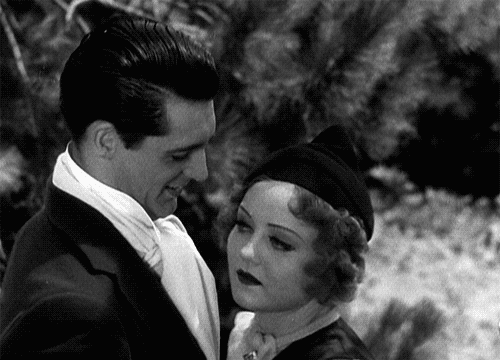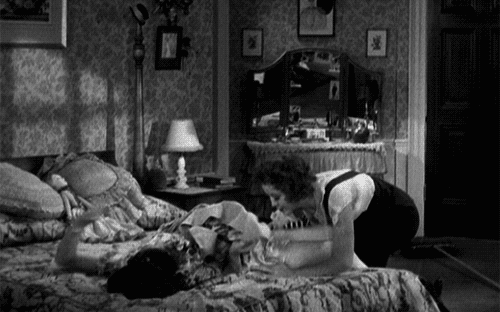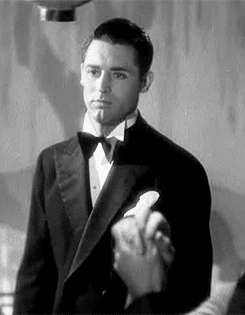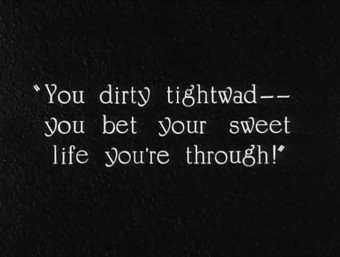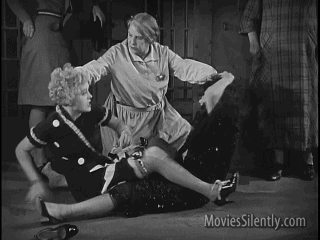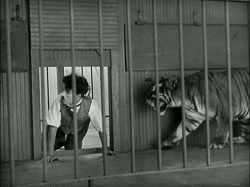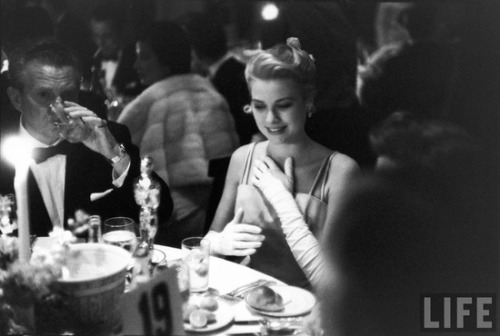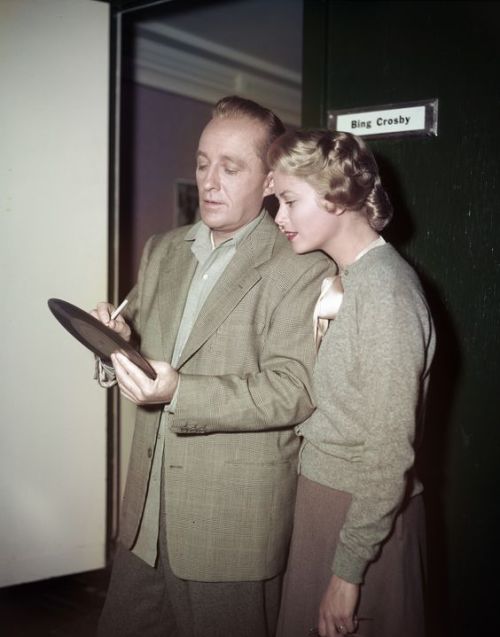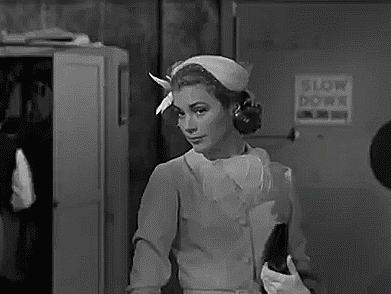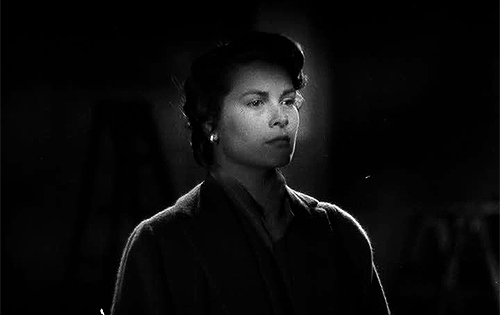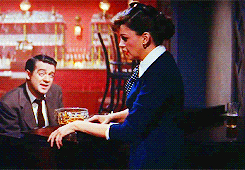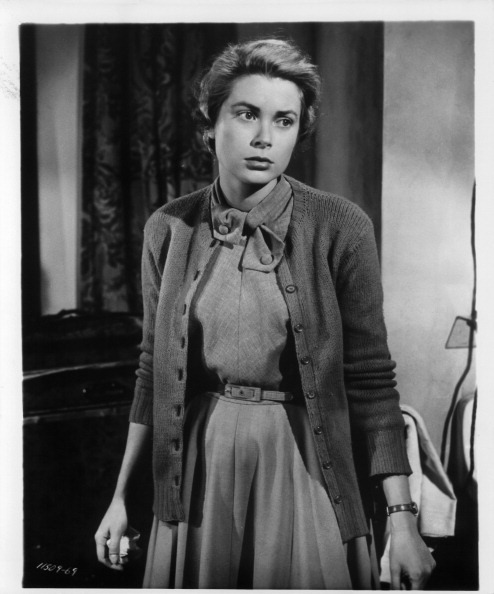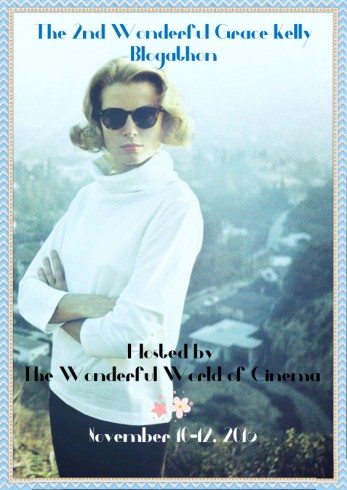ESTE ARTIGO CONTÉM SPOILERS.
THIS
ARTICLE HAS SPOILERS.
Há algo
de encantador em cidades pequenas. As casinhas com cercas baixas. As lojas
passadas de pai para filho. O parque ou o lago onde acontecem todas as funções
sociais. O fato de que todos se conhecem. E há algo de podre nas cidades
pequenas também, e justamente pelo motivo de que todos se conhecem. É terreno
de fofoca, inveja, reputações destruídas por boatos. A reputação de Ruth (Nancy
Carroll) em “Sábado Alegre” é destruída justamente por um boato. Se eu fosse
Ruth, nem me importaria: afinal, o boato envolve ninguém mais ninguém menos que
Cary Grant.
There
is something charming in small towns. The little houses with low fences around.
The mom and pop stores. The park or lake where all the picnics happen. The fact
that everybody knows everybody. And there is something rotten in small towns as
well, also because everybody knows everybody. Small towns are ground for
gossip, jealousy, are places where reputations are destroyed by rumors. Ruth’s
(Nancy Carroll) reputation in “Hot Saturday” is destroyed by a rumor. If I were
Ruth, I wouldn’t care: after all, the rumor involves Cary Grant!
Ruth
trabalha no banco e é cobiçada por todos os funcionários do sexo masculino. Ela
rejeita diversos convites para sair, mas finalmente cede quando Conny (Ed Woods,
que interpretou o irmão bonzinho de James Cagney em “Inimigo Público” em 1931)
a convida para ir ao clube numa tarde de sábado.
Ruth
works at the bank and all the male employers are interested in her. She refuses
several approaches, but finally capitulates when Conny (James Woods, who played
James Cagney’s good brother in ‘The Public Enemy” in 1931) invites her to go to
the club on a Saturday afternoon.
Naquele
sábado alegre, em uma bela casa em frente ao lago, os jovens se divertem,
nadam, passeiam de barco e comem. Mais tarde, eles vão para um baile. O dono da
casa é Romer Sheffield (Cary Grant), que tem a má fama de ser um garanhão que
não espera até a noite de núpcias para ter intimidade com suas namoradas.
On that
hot Saturday, in a beautiful house near the lake, the young people have fun,
swim, ride boats and eat. Later they go to a dancing house. The owner of the
house by the river is Romer Sheffield (Cary Grant), who is a known womanizer
who can’t wait until the wedding night to get intimate with his girlfriends.
Romer
não vai ao baile, mas Ruth e Conny vão. Pouco depois, eles pegam um barco e
Conny tenta beijar Ruth contra a vontade dela. Ela resiste e sai correndo, e em
busca de ajuda vai até Romer, que pede que seu motorista a leve de volta para casa.
Mas Conny não vai deixar barato: com a ajuda de Eve Randolph (Lilian Bond), a
ciumenta filha do dono do banco, ele espalha um boato sobre Ruth.
Romer
doesn’t go dancing, but Ruth and Conny do. A little later, they catch a boat
and Ronny tries to kiss Ruth against her will. She resists, runs away and asks
Romer for help. He listens to her, comforts her and asks his driver to take her
home. But Conny is planning revenge: with the help of Eve Randolph (Lilian
Bond), the bank owner’s jealous daughter, he starts a rumor about Ruth.
Logo
todos na cidade ouvem a fofoca: Ruth passou a noite com Romer. Cada um que
espalha o boato adiciona um toque de malícia. Ruth é demitida e se torna pária
em sua cidade. Vítima da hipocrisia, ela vê uma chance de redenção em um velho
amigo de infância, Bill Fadden (Randolph Scott), que confessa que sempre foi
apaixonado por ela. Ruth decide se casar com ele. Mas será que ela o ama de
verdade?
Soon
everybody in town know about the gossip: Ruth spent the night with Romer. Each
person adds a new spicy detail when spreading the rumor. Ruth is fired and
becomes persona non grata in the city. A victim of hypocrisy, she sees a last
chance of redemption in her childhood friend Bill Fadden (Randolph Scott), who
confesses he has always been in love with Ruth. She decides to marry him. But
is it true love?
A
construção da história até chegar ao clímax – o ostracismo de Ruth – é lento,
levando 40 minutos. Sobram apenas mais 32 para a história ser finalizada. Mas
que final mais deliciosamente... pre-Code!
Building
up the story until the clímax – that is, Ruth’s ostracism – takes 40 minutes. We
have only 32 more minutes left until the end. But the end is deliciously…
pre-Code!
Há uma
cena em especial que grita pre-Code:
vemos Ruth trocando de roupa, ficando apenas com um saiote quase transparente.
E ela faz isso logo depois de tirar, à força, os shorts que a irmã
pré-adolescente havia pegado de sua gaveta. É uma sequência que deixaria
William Hays de cabelo em pé.
There
is one scene in particular that screams ‘pre-Code’: we see Ruth changing
clothes, and she wears a near transparent negligee. This happens right after
Ruth violently undresses her teenager sister because the little girl had stolen
her new shorts. It is a scene to freak William Hays out.
Cary
Grant, pela primeira vez com seu nome no topo dos créditos, é muito sedutor já
aos 28 anos. Além disso, ele aparenta usar bastante lápis de olho e rímel, que
deixam seu olhar penetrante. Randolph Scott tem um personagem que consegue ser
denso mesmo com poucas cenas, e é interessante ver os dois melhores amigos na
vida real em uma pequena disputa cinematográfica pela mesma mulher. Eles fariam
mais um filme juntos, “Minha Esposa Favorita” (1940).
Cary
Grant, first-billed for the first time in his career, is a very seductive
28-year-old. And he achieves a powerful look in his eyes by, apparently, using
a lot of makeup and mascara. Randolph Scott plays a character that could be
dense and well-constructed even with little screen time. It’s interesting to
see the two best friends in real life competing for the same woman on the
screen. Grant and Scott would make one more film together, “My Favorite Wife”
(1940).
O final
é redentor, e muito moderno e necessário. Nancy Carroll arregala os olhos e
percebe que precisa cuidar de sua própria vida, capitanear seu destino sem se
importar com o que os outros pensam. É impressionante ver que um filme de 1932
tem temas tão atuais. É triste perceber que as questões (especialmente para
mulheres) são as mesmas de 80 anos atrás. E é mais triste ainda saber que a
sociedade continua hipócrita, mas sem a presença de Cary Grant para embelezar o
mundo.
The
ending is redemptive, very modern and necessary. Nancy Carroll has her eyes
wide open when she realizes that she must mind her own business and live her
life without bothering about the opinions of others. It’s surprising to see
that a film from 1932 has such a modern theme. It’s sad to see that some
troubles (for women, in special) are the same as 80 years ago. And it’s even
sadder to know that society has still a lot of hypocrisy, and Cary Grant is not
here anymore to make the world a little more pleasant.
This is
my contribution to the Cary Grant blogathon, hosted by Laura at Phyllis Loves Classic
Movies.


